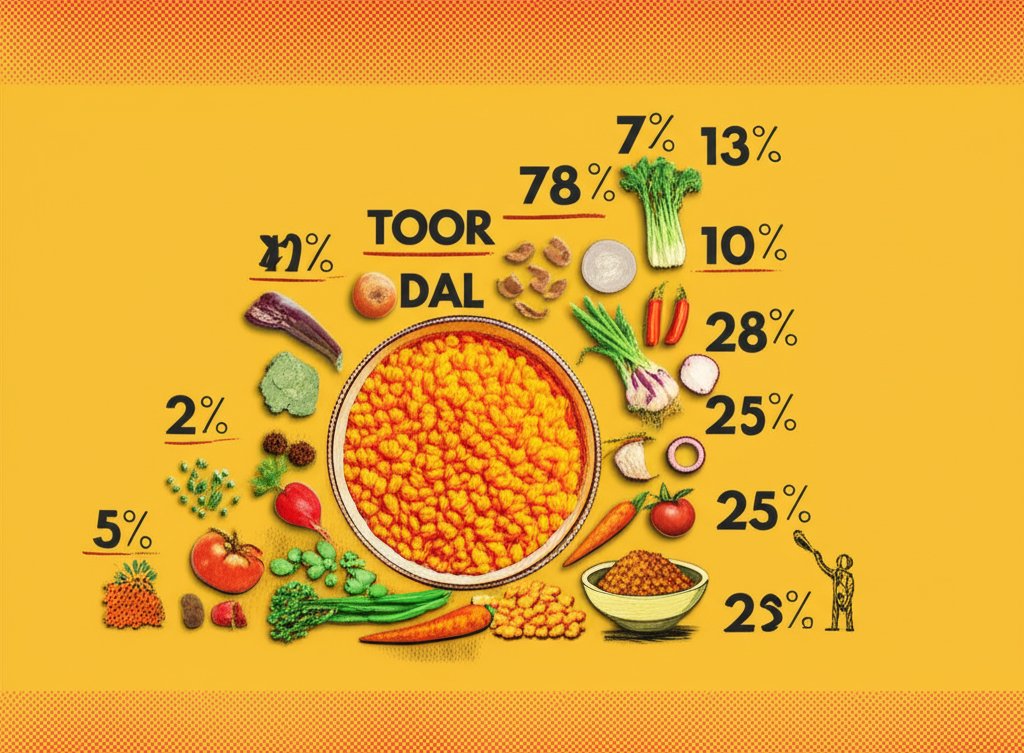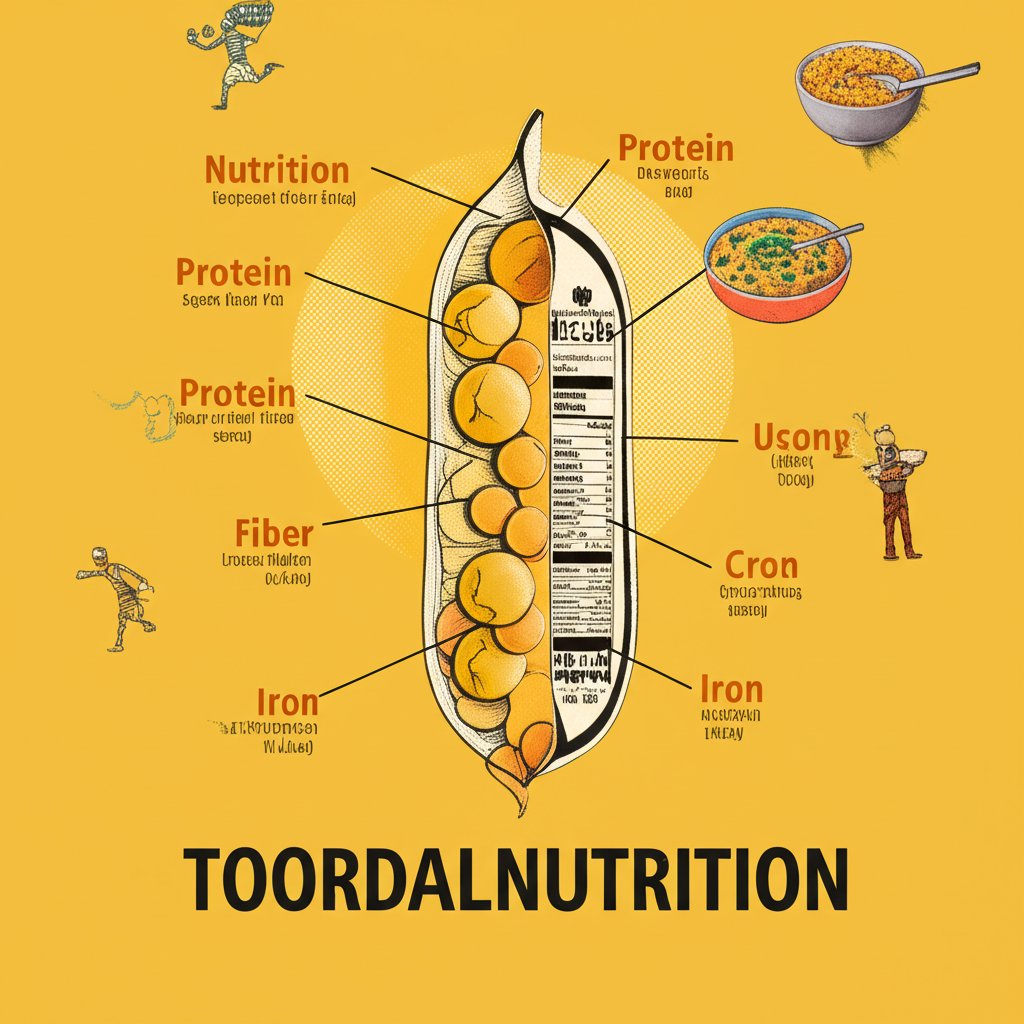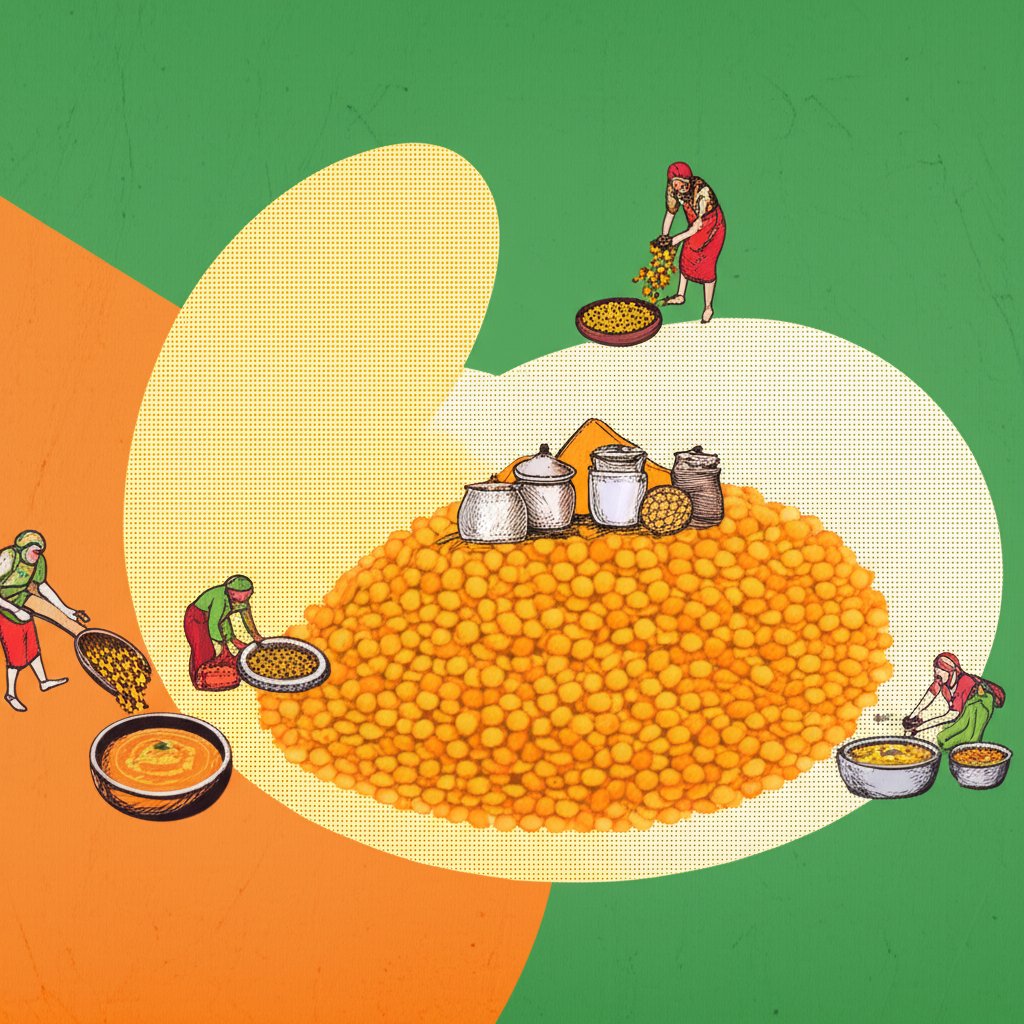Want to boost the protein and fiber in your diet? Understanding toor dal nutrition facts is key. This lentil, a staple in Indian cuisine, offers a nutritional punch that complements many dishes, including adding a protein-rich element to your favorite tamale fillings.
At a glance:
- Discover the protein and fiber benefits of toor dal.
- Understand how toor dal compares to other legumes in terms of nutrition.
- Learn practical ways to incorporate toor dal into your diet.
- Address common questions about toor dal’s impact on digestion and specific dietary needs.
Why Toor Dal’s Nutrition Profile Matters
While tamales are a satisfying and versatile meal, they can sometimes lack a complete protein source, especially if you’re opting for vegetarian fillings. Adding toor dal, even indirectly by using it in a filling, can significantly boost the nutritional value. It’s not just about protein; it’s about the balance of macronutrients and micronutrients you get from incorporating diverse ingredients.
Decoding Toor Dal Nutrition Facts: A Detailed Breakdown

Let’s delve into the specifics of what makes toor dal a nutritional powerhouse. We’ll focus on the key macronutrients and micronutrients, and how they contribute to your overall health.
Macronutrient Powerhouse: Protein, Carbs, and Fiber
Toor dal is primarily a source of protein and carbohydrates, with a healthy dose of fiber thrown in. Here’s what you can expect from a 1/4 cup (approximately 50g) serving of uncooked toor dal:
- Calories: ~170
- Protein: ~11 grams – essential for building and repairing tissues.
- Carbohydrates: ~30 grams – provides energy for daily activities.
- Fiber: ~5 grams – promotes digestive health and helps regulate blood sugar levels. This is comparable to the fiber content found in some tamales!
- Fat: ~1 gram – very low in fat, making it a lean protein source.
The high protein and fiber content contribute to feelings of fullness and satiety, potentially aiding in weight management. The carbohydrates are complex, meaning they are digested slowly, providing sustained energy rather than a quick spike and crash.
Micronutrient Marvel: Vitamins and Minerals
Beyond the macronutrients, toor dal is also a good source of several essential vitamins and minerals:
- Folate (Vitamin B9): Important for cell growth and development, especially crucial during pregnancy.
- Iron: Essential for carrying oxygen in the blood and preventing iron-deficiency anemia.
- Magnesium: Involved in hundreds of biochemical reactions in the body, including muscle and nerve function, blood sugar control, and blood pressure regulation.
- Potassium: Helps regulate blood pressure and fluid balance.
- Phosphorus: Important for bone health and energy production.
A Note on Antinutrients
Like other legumes, toor dal contains antinutrients like phytic acid, which can interfere with the absorption of certain minerals. However, soaking, sprouting, or cooking toor dal significantly reduces the levels of these antinutrients, making the nutrients more bioavailable.
Toor Dal vs. Other Legumes: A Nutritional Comparison
How does toor dal stack up against other popular legumes like lentils, chickpeas, and black beans? Here’s a quick comparison:
| Nutrient | Toor Dal (1/4 cup, uncooked) | Lentils (1/4 cup, uncooked) | Chickpeas (1/4 cup, uncooked) | Black Beans (1/4 cup, uncooked) |
|---|---|---|---|---|
| Calories | ~170 | ~170 | ~180 | ~160 |
| Protein | ~11g | ~13g | ~10g | ~10g |
| Carbohydrates | ~30g | ~30g | ~30g | ~29g |
| Fiber | ~5g | ~6g | ~5g | ~8g |
| Iron | Varies, but generally good | Good | Good | Excellent |
| While the differences are subtle, toor dal provides a comparable amount of protein and fiber to other legumes. Black beans are a standout source of fiber, while lentils often contain a bit more protein. Ultimately, the best choice depends on your individual preferences and dietary needs. Understanding these variations can help you choose wisely when considering your complete nutritional profile. You can learn More on Tamale Nutrition Facts and how toor dal can complement it. |
Incorporating Toor Dal Into Your Diet: Practical Tips
Ready to add toor dal to your diet? Here are some practical ways to do it:
- Classic Dal: The most common preparation is dal, a flavorful lentil stew that can be customized with spices and vegetables. Experiment with different regional variations for diverse flavors.
- Soups and Stews: Add cooked toor dal to your favorite soups and stews for an extra boost of protein and fiber.
- Salads: Cooked and cooled toor dal can be added to salads for a hearty and nutritious element.
- Flour for Baking: Toor dal flour can be used in baking to increase the protein content of bread, roti, or other baked goods.
- Tamale filling: Use it as part of a tamale filling. Combine toor dal with vegetables and spices for a vegetarian option.
Example Recipe: Simple Toor Dal
This recipe provides a basic template for making toor dal. Feel free to adjust the spices and vegetables to your liking.
Ingredients:
- 1 cup toor dal
- 4 cups water
- 1 teaspoon turmeric powder
- 1 teaspoon salt
- 1 tablespoon oil
- 1 teaspoon cumin seeds
- 1/2 onion, chopped
- 1 clove garlic, minced
- 1/2 teaspoon ginger, grated
Instructions:
- Rinse the toor dal thoroughly.
- Combine the toor dal, water, turmeric powder, and salt in a pot. Bring to a boil, then reduce heat and simmer for 30-40 minutes, or until the dal is soft and mushy.
- While the dal is simmering, prepare the tempering (tadka): Heat the oil in a separate pan. Add the cumin seeds and let them sizzle. Add the onion, garlic, and ginger, and sauté until golden brown.
- Pour the tempering over the cooked dal. Mix well and simmer for a few more minutes.
- Serve hot with rice or roti.
Addressing Common Concerns: Q&A

Let’s tackle some frequently asked questions about toor dal:
Q: Can toor dal cause gas or bloating?
A: Like other legumes, toor dal can cause gas and bloating in some individuals due to its high fiber content and the presence of certain carbohydrates. Soaking the dal overnight before cooking, and starting with small portions, can help reduce these effects.
Q: Is toor dal suitable for people with diabetes?
A: Yes, toor dal is generally considered a good food for people with diabetes due to its high fiber content and low glycemic index. The fiber helps regulate blood sugar levels, preventing spikes and crashes. However, portion control is still important.
Q: Is toor dal gluten-free?
A: Yes, toor dal is naturally gluten-free, making it a suitable option for individuals with celiac disease or gluten intolerance.
Q: Can I eat toor dal every day?
A: Yes, as part of a balanced diet, consuming toor dal regularly can be beneficial. However, it’s important to vary your food choices to ensure you’re getting a wide range of nutrients.
Q: How do I store toor dal?
A: Uncooked toor dal should be stored in an airtight container in a cool, dry place. Cooked toor dal should be refrigerated and consumed within 3-4 days.
Toor Dal Playbook: Quick Start Guide
Ready to integrate toor dal into your meal planning? Use this quick start guide:
- Start Slow: If you’re new to legumes, introduce toor dal gradually to avoid digestive discomfort.
- Pre-Soak: Soak toor dal overnight before cooking to reduce antinutrients and improve digestibility.
- Spice it Up: Experiment with different spices and flavors to find your favorite toor dal recipes.
- Pair it Right: Combine toor dal with whole grains, vegetables, and healthy fats for a balanced meal.
- Consider for Tamales: Experiment with using toor dal as part of a filling for tamales, especially to increase the protein content of vegetarian versions.
The Takeaway: Embrace the Power of Toor Dal
Understanding toor dal nutrition facts equips you to make informed choices about incorporating this versatile legume into your diet. With its impressive protein and fiber content, along with essential vitamins and minerals, toor dal offers numerous health benefits. Whether you’re looking to boost your protein intake, improve your digestive health, or simply add more variety to your meals, toor dal is a worthwhile addition to your culinary repertoire. Start experimenting with different recipes and discover the many delicious and nutritious ways to enjoy this Indian staple.
- How Glass Bento Box Containers Make Meal Prep Easier - December 18, 2025
- Why Glass Boxes for Lunch Are Trending for Meal Prep - December 17, 2025
- Bento Box Glass Offers Practical, Eco-Friendly Meal Storage - December 16, 2025










